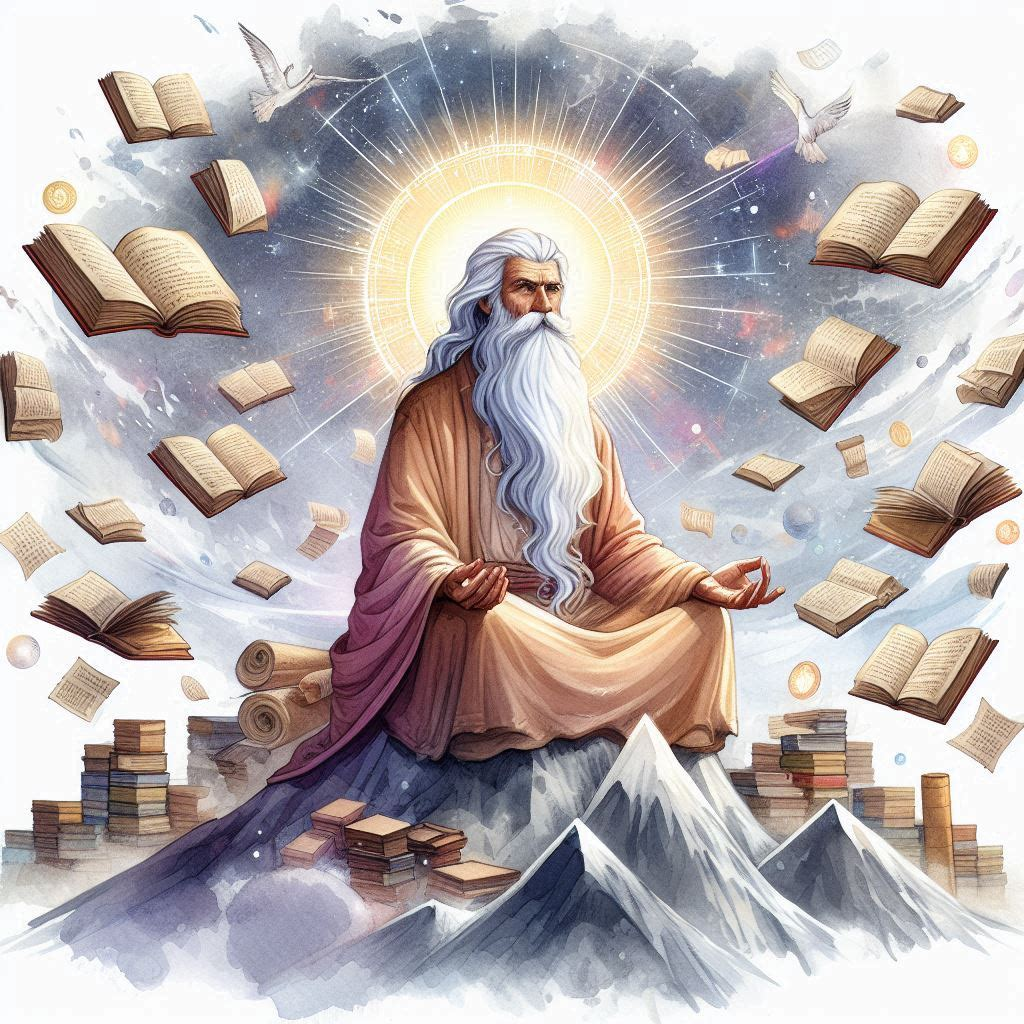Satyam Jnaanam Anantam Brahma
Taittiriya Upanishad (2.1.1)
The Upanishad contents that the Brahman (Supreme Being) is pure existence (sat or satyam), consciousness (chith or aanand), and infinite (aananda or anatam).
That is why He alone is known as ‘Sath-Chith-Anand’ Swaroop or Form. It means He is an embodiment of Sath (Truth or Power), Chith (Consciousness) and Anand (Bliss).
Note: The Supreme Being or Brahman mentioned in the Vedas and Upanishads is not the Paar Brahm Aksharateet, Allah, or the Supreme Truth God. That form is only the Sablik Brahm, the governing power of the sablik aspect (the third aspect of the Quadraped Magnificence of Akshar Brahm (the Superior Brahman) from where the Vedas have manifested. I gained this knowledge from the Ultimate Revealed Wisdom, Kulzama Swaroop of the Nijanand Order, which I happened to stumble upon. The other blogs on ‘Know the Three Principles and Their Sports’, ‘Mystery of the Cosmic Dance of Creation’, ‘The Absolute Triad’ and ‘The Form and Triad Manifestation of the Supreme Lord’ shall throw light on this aspect.
Unfortunately, people of this world, due to ignorance, address their own Adored Forms or even their Masters as Sath-Chith-Anand.
Now the question is, “Who is the Supreme Lord or Aksharateet Paar Brahm? And Where is He?
What is the root or the source of love, peace and bliss? Again, other questions arise as to who I am. From where have I come, and where shall I go after death?
Only when these questions arise in mind will it mark the beginning of an individual’s spiritual journey?
Humans are normally always searching for peace and happiness. To attain that, they pursue worldly comforts and material happiness. They are always engaged in fulfilling their desires, which never find satisfaction. Fulfillment of desires leads to more desires, like adding clarified butter to a fire, which makes it burn wilder and brighter. This keeps a human in an unending search for more and more unsatiated happiness and pleasures.
This entire Universe is made of the Illusory Entity (Maaya) manifested from the tri-attribute unmanifest nature. The form of real happiness is tri-attributeless. This tri-attributed Universe is devoid of happiness and more so of bliss, as the form of bliss is very much vested in happiness. The desire for the acquisition of peace is meaningless without bliss. One of the maxims of the wisdom of Bhatrahari says that we are not enjoying mundane pleasure, but we have been devoured by pleasures, which have taken us captive. Instead of penance, we are suffering pain in pursuing earthly pleasures. Nevertheless, we have not performed austerities but got scorched ourselves; time is not gone, but we are approaching the end. Desires do not wear out, and only we are struck down by senility.
Time never grows old, but our lifetime ebbs away; never craving ages, but we become old (Vairagya Shatakam 8).
The Contention of Brhadaranyak Upanishad (4/5/3, 6)
Let us see what the Great Sage Yajnavalkya says to his wife. Yajnavalkya had two wives, Maitreyi and Katyayani. Maitreyi used to discuss Brahman with Yajnvalkya. Once, when Yajnavalkya told Mitreyi about his intention to renounce the worldly life, Maitreyi asked Yajnavalkya, O, my lord, if indeed this whole earth full of wealth be mine, shall I be immortal or not? He replied, no, your life will be just like that of people who have plenty of things, but there is no hope of peace or immortality through wealth.
He further says that knowing the self is the first step to peace and immortality. The path towards peace and immortality begins only when the self is realized, O, Maitreyi.
In Essence
Everything in this world is dear to us because of desire alone. This keeps us rooted in worldly pleasures, oblivious that the Supreme Lord is worth seeing, hearing, and contemplating.
Similarly, it is said-
Nityo’nityaanaam chetanas’chetanaanaam,
Kattop Upanishad (2/2/13)
eko bahuunaam yo vidadhaati kaamaan.
Tamaatmastham yhe’nupasyanti dhiiraah,
tesaam saantih saasvatii netresaam.
Meaning: There is One who is the eternal Reality among non-eternal objects, the one truly Conscious Entity among conscious beings and who, though non-dual, fulfils the desires of many. Eternal peace belongs to the wise, who perceive Him within themselves – not to others.
Note: Here, the reference is to the Creator God or Ishwara (Aadi Narayan or Super Brahman or Super Consciousness) because the Supreme Consciousness (Aksharateet Paar Brahm) was not revealed then.
But until one has the correct perception of the abode, divine form, and sport of the Supreme Lord, one cannot accomplish self-realization or Supreme Realization. Therefore, we must go on the path of acquiring Supreme Divine Knowledge. Even in Darshan Philosophy (Darshan Shastr), it is said that eternal salvation is not possible until one does not acquire the pure divine knowledge of the Supreme Lord. However, ignorance of the Supreme Truth makes people bound to many false beliefs.





